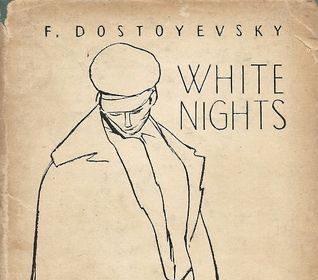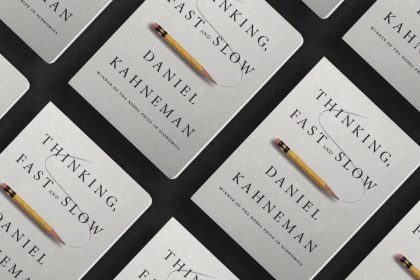Not Your Regular Book Review
Fyodor Mikhailovich Dostoevsky, a Russian writer, social and political commentator, and a sort of anti-nihilist, is one of the most celebrated writers from the nineteenth century, not only in Russia, but the whole world. I am one of the people who discovered Dostoevsky much later, and that too, randomly. However, I feel that one is meant to come across a piece of art at a certain time so that one may understand it deeply by heart.
This book lay on my shelf for over a year until I finally decided to pick it up. Little did I know that I was uncovering a whole new world of real-life characters and emotions. A little disclaimer is that this is not your regular book review of “Crime and Punishment,” as, according to me, an entire book can be written on this literary masterpiece. This is merely an informal account of my own understanding of Dostoevsky’s ideas and words, as well as my feelings for the book. This is just my attempt to present a humble and brief tribute to Dostoevsky for providing such a realistic adaptation of human nature, psyche, emotions, and sociopolitical situations in the form of his books like “Crime and Punishment.” Due to the word count, I might not be able to discuss the book in every detail, but hopefully that suspense will lead my readers into reading it themselves. It is a tale of crime and redemption, guilt and pride, and love and hatred.

The Thought Process behind this Masterpiece
The uniqueness of this novel also stems from Fyodor Dostoevsky’s personal experiences, including psychological challenges. He has translated them into words with perfection, leaving no flaws. It is important to know that almost over a year prior to writing “Crime and Punishment,” Dostoevsky was facing immense mental and financial hardship. Similar to the novel’s protagonist Raskolnikov, he was also going through depression and loneliness and was under the burden of debts. He has beautifully described the condition of a person who is highly intelligent and even empathetic but suffers from severe depression and lives in isolation from society. Like the writer, the main character belongs to the working class of society and thus is strained by the oppressive nature of the status quo. His mental and financial conditions have a reciprocal relationship, as one is the cause of the other and vice versa. Similarly, the scenes from prison at the end of the novel also showcase Dostoevsky’s personal experiences when he was imprisoned in Siberia for four years on the charges of political subversion against the Tsar. During that time, he wrote a semi-autobiography titled “Memoirs from the House of the Dead,” where he penned down his time in prison.

“Crime and Punishment” From Dostoevsky’s Lens
Dostoevsky described it as a “psychological account of crime.” He also displayed the motives of crime and the psychological torture after committing it, as well as the conflicting feelings of arrogance and hating oneself. The simultaneous torment of tactfully escaping justice and loathing one’s being from the depths of the heart is extraordinarily depicted by Dostoevsky in this book. His mind-blowing amalgamation of human psychology with sociological aspects, as well as his critique of the elite and ruling class in a subtly blunt manner, leaves the reader awestruck by his intellectual brilliance. Calling Fyodor Dostoevsky a mere novel writer would be an understatement and an offense to his philosophical traits. His novels aptly depict the rapidly transforming and evolving social and political landscape of 18th-century Russia, and “Crime and Punishment” presents the influential wave of western liberal and rational ideologies in somewhat orthodox Russian society under authoritarian rule.
Dostoevsky’s contemporaries were highly influenced by such changes in thought and society, and therefore, nihilism was much on the rise among the educated class. For context, nihilism, a philosophical ideology, is the rejection of all moral and religious notions and principles and the belief that life is meaningless. Nihilists believe that there is no concept of divine justice, and hence, man is in control of justice, even if it means committing a crime and harming a minority of people for the collective benefit of the majority of mankind. Dostoevsky despised such ideas, and he wrote “Crime and Punishment” as a response in order to explain the catastrophic consequences of such ideas and their anarchic capabilities in society.

Raskolnikov’s “theory” and his arrogant self-image manifested the theory of utilitarianism in the way a man is capable of committing the most heinous crimes in their delusion of benefiting society. He commits a double murder in his own delusional notion that he is freeing the society from the evil humans, called “louse” in the novel. However, the constantly emerging paradoxical emotions before and after the crime is committed present us with eerie and suffocating scenes where the readers also feel the torture Raskolnikov goes through.
Sonia—the Pivot of Raskolnikov’s Life
One of the most beautiful aspects of this novel is the way Dostoevsky has provided a backstory to every single character and has linked them with Raskolnikov in such a way that they all remain relevant to him throughout the course of the novel. They cannot be counted as side characters because each character has influenced the personality, ideas, actions, and self-discovery in one way or another. Sonia serves as the centerpoint in the protagonist’s life. She is shown to have an unwavering faith in divine justice, and her presence in Raskolnikov’s life leads the latter to finally surrender. Moreover, their love story was unlike any traditional one, since their love was born out of Raskolnikov’s need for Sonia as a companion in suffering.
I leave the rest to my readers, as there was a lot to talk about, including that “yellow wallpaper.”
















